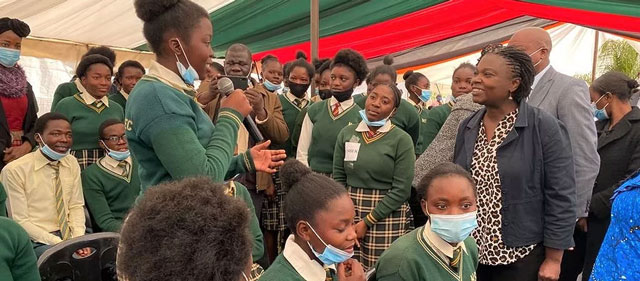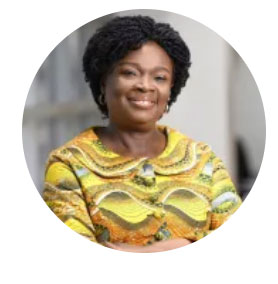
COMMENT | Victoria Kwakwa | Every year at the end of November, activists speak out to remind the world of the scourge of gender-based violence and the World Bank lends its voice to the 16 Days campaign to prevent and eliminate violence against women and girls. The issue for me coalesces around fundamental human rights – the right of every person to be free from violence and coercion and to enjoy individual agency and choice. This includes the right to a quality education in a safe and protective environment that allows each individual the opportunity to learn, grow and thrive.
In this respect, Data from 2019 shows that 41.3% of girls and 46% of boys complete lower secondary school. Sub-Saharan Africa is the only region in which the regional rate is higher for boys than for girls.
Moreover, girls’ lives are shadowed by gender-based violence (GBV). In Sub-Saharan Africa, Intimate Partner Violence (IPV)— psychological, sexual, and physical violence committed by a current or former intimate partner or husband is among the highest in the world, with 33% of women aged 15–49 years likely to suffer IPV in their lifetime.
Girls in rural areas are particularly disadvantaged. According to a 2017-2018 Multiple Indicators Cluster Survey, girls in rural areas of the Democratic Republic of Congo (DRC), for example, were 23 percentage points less likely than boys in rural areas, and 46 percentage points less likely than boys in urban areas, to enter grade 12.
A whole set of factors conspire to scare and dissuade girls from reaching the educational attainment they deserve, such as social norms that favor early marriage. Social norms and values that condone GBV change slowly and require sustained investment over time in measures such as community awareness raising, training of activists, and livelihoods interventions. But some of these factors can be changed relatively quickly with clear role modeling, decisive policies, and investments. Let’s focus here on three action areas that can make a big difference in girls’ lives.
The first priority is to break the social acceptance of gender-based violence in schools. This should be stated loud and clear at all levels, from the country’s top leadership, down to national and provincial institutions, families and schools, and backed by real measures of accountability.
I’m encouraged to hear that in the DRC, the government has begun to strengthen the safety of primary schools with World Bank support: 100% of primary school teachers in the provinces where the Emergency Equity and System Strengthening in Education project operates have signed a revised Code of Good Conduct that includes clear definitions of prohibited behavior pertaining to sexual exploitation, abuse and harassment, and also lays out sanctions. About 20,000 safe and inclusive school focal points were appointed in all public primary schools in project provinces and a dedicated channel for resolving sexual exploitation and abuse and sexual harassment (SEA/SH) complaints was integrated in the ministry’s grievance mechanisms (Allo Ecole, launched in April 2022). As of the end of October 2022, 64 project-related SEA/SH complaints have been reported since the beginning of the project. Psychosocial, medical and/or legal support has been provided for all survivors. Disciplinary proceedings in connection with 42 of the 64 project-related SEA/SH incidents reported so far have also been concluded, resulting in the dismissal of implicated teaching personnel in 37 cases.
The second priority is to urgently reach and re-enroll the girls who dropped out of school because of COVID-19 lockdowns, pregnancy, or other factors.
Countries are aware of this risk and are taking measures to protect their human capital: In Malawi, COVID-19 impacts, compounded by cyclones and economic woes, have led to a dramatic drop in examination pass rates, especially for girls, calling for urgent action. Additional financing for the Equity with Quality and Learning at Secondary Project includes sub grants to schools to provide cash transfers, in an effort to get both boys and girls back into school, with differentiated application for girls. (Early results show that girls’ examination pass rates have started to recover from their low in 2020.) In Angola, the Girls Empowerment and Learning Project includes improved access to sexual and reproductive health services. For out-of-school youth, the project scales up second-chance education, incorporating life skills and adolescent health information. It introduces a scholarship program reaching 900,000 youth entering secondary school, with a registration bonus for girls.
This #16Days everyone can make a difference.
Here are ways to end violence against women & girls:
📣Speak up against violence
❌Call out sexual harassment
✔️Challenge beliefs on masculinity
⚖️Push for stronger laws
💰Fund women’s organizationsRead more: https://t.co/COzzYhFAPO pic.twitter.com/9YN2CyGTfA
— UN Women South Sudan (@unwomenssudan) November 30, 2022
The third priority is to make schools better-suited for teenage girls, by filling critical gaps in access to water and sanitation.
In Tanzania, for example, our research found that about 57% of schools had no functional hand washing facilities and almost 40% had no water supply in the premises. In addition, more than 60% did not have a place to dispose of sanitary pads. More than half of the latrines for girls did not have doors, increasing the risk of GBV at schools and pushing girls to drop out. Conversely, World Bank findings showed that adequate sanitation and menstrual hygiene management helped increase adolescent girls’ retention and participation in schools. Programs like the Tanzania Sustainable Rural Water Supply and Sanitation Program, an IDA-financed Program for Results that focus on school sanitation needs can be a game changer for girls. Similarly, the ongoing Secondary Education Quality Improvement Program which supports the implementation of a comprehensive Safe Schools Program, also targets infrastructure improvements, including a reasonable student-to-latrine ratio for both girls and boys.
At the World Bank, we are committed to empowering women and girls. Since we launched the Africa Human Capital Plan in 2019, approximately $6 billion in World Bank financing has been invested in championing women and girls. To increase our impact, we are currently working on a Regional Gender Action Plan, that will focus on closing earning, asset, digital and education gaps; better reproductive health; lowering rates of GBV; addressing social norms; strengthening laws and regulations; and engaging men and boys.
As the daughter of a university lecturer and a schoolteacher, I naturally value education. But my focus on girls’ education is not only a personal preference.
******
SOURCE: World Bank Media
******
 Victoria Kwakwa, a Ghanaian national, is the Regional Vice President for Eastern and Southern Africa. An economist and development expert with over 30 years of experience, Dr. Kwakwa leads the Bank’s engagement with 26 countries. She oversees an active portfolio of 313 operations totaling $58 billion and an extensive program of cutting-edge analytic work, technical assistance, and policy advice.
Victoria Kwakwa, a Ghanaian national, is the Regional Vice President for Eastern and Southern Africa. An economist and development expert with over 30 years of experience, Dr. Kwakwa leads the Bank’s engagement with 26 countries. She oversees an active portfolio of 313 operations totaling $58 billion and an extensive program of cutting-edge analytic work, technical assistance, and policy advice.
 The Independent Uganda: You get the Truth we Pay the Price
The Independent Uganda: You get the Truth we Pay the Price



